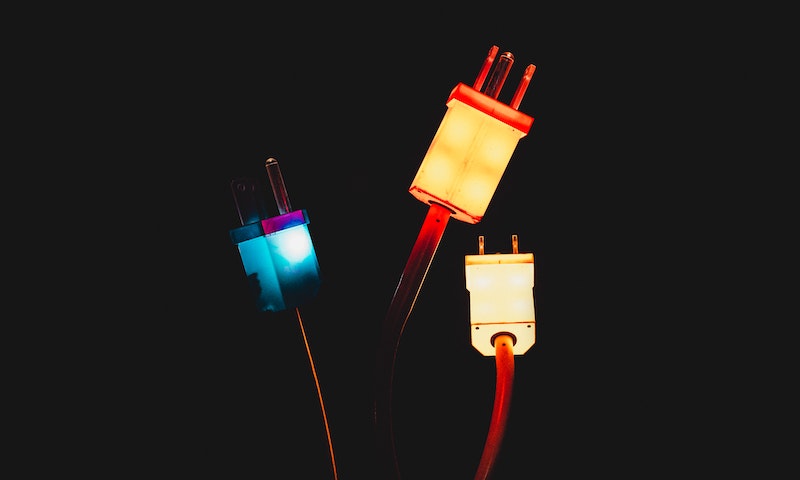Electricity providers have stung their customers for $10 billion in supernormal profits, despite crying poor to the regulators and despite siphoning out billions, largely free of tax to foreign billionaires and power companies. Mark Sawyer reports on the latest analysis of Australia’s energy sector.
An important report was released at a minute after midnight today. The report, by the Institute for Energy Economics and Financial Analysis (IEEFA), shows that while energy giants have been crying poor, they have ripped off Australian customers to the tune of $10bn in “supernormal profits”.
It found that electricity consumers have paid substantially higher bills than necessary for ‘‘poles and wires’’, providing a hefty $10 billion in supernormal profits for energy network providers in the eastern states of Australia over an eight-year period due to flaws in network regulation.
This is classic ‘gold-plating’ in the industry parlance. The more the network giants can convince the regulators they need to spend on poles, wires and other business expenses, the more they recoup from the regulators in higher bill prices from customers.
The report, Regulated Electricity Network Prices Are Higher than Necessary, found the actual profit that energy network providers received from electricity consumers over 2014 to 2021 was 67% higher than the normal level of profit.
Yet despite the super-profits, the National Energy Market (NEM) operator AEMO was forced to take the radical step of suspending the market three months ago as the suppliers threatened to withhold supply unless they were paid more.
Fed up AEMO finally stands up to fossil fuel bullies pulling electricity heist
In its report, examines issues related to energy markets, trends and policies. Its mission is to accelerate the transition to a diverse, sustainable and profitable energy economy.
The report’s author, Simon Orme, is a regulatory economist with long background in Australian and New Zealand economic regulation in the utility sector.
‘‘Poles and wires’’ distribution and transmission network service businesses, including the likes of United Energy, Endeavour, SA Power Networks and AusNet, have consistently been charging electricity consumers too much – around 11% more than total costs. Of the 18 network service providers (NSP) analysed, 14 extracted profit above IEEFA’s expected profit multiple range.
This has imposed an unnecessary additional average cost of 6.8% onto people’s electricity bills in 2020, or between $800 to $1200 per energy customer over the eight-year period, depending on the state they live in, with no additional reliability benefits because the supernormal profits are after all network reinvestment.
Playing games with consumers
In June, big players in the grid refused to deliver to power consumers. Not enough profit they claimed. Finally, the Australian Energy Market Operator (AEMO) called their bluff and suspended the market.
As it turned out, it was crocodile tears. Apparently, they are in business never to make a loss, even on a daily basis that the regulators won’t pay them for.
Meanwhile, much of the supernormal profits have likely gone to offshore owners. As investigated by MWM, many of them are big tax avoiders; the likes of Energy Australia and Hong Kong billionaire Li Ka-Shing’s companies in Australia which control the Victorian grid.
The report finds the complex regulatory system designed to prevent sustained excessive network monopoly profits has failed due to weak laws and rules regulating networks and a lack of transparency over the extent of monopoly profits. In IEEFA’s view, the supernormal profits of $10 billion over 2014-2021 appear inconsistent with the National Electricity Objective.
The enormous supernormal profits have also hindered Australia’s necessary transition to a low carbon electricity system by diverting funds that could have been used to fund the energy transformation.
The new information and commentary in the network section of the 2022 State of the Energy Market report released on Thursday does not invalidate any of the analysis and findings of the IEEFA report. They reinforce the need for strong government action to fix failures in the existing systems regulating electricity network prices.
They’re not shivering in Honkers: Australians’ electricity pain is two billionaires’ gain
Orme says regulatory change must occur immediately. “People’s electricity bills are forecast to increase even further over the next 6-18 months as high coal and gas prices globally impact Australia’s domestic prices,” he said.
“Australia’s energy customers have been spinning golden silk for network providers for nearly a decade. They can’t be expected to fund super profits any longer. The extra burden must be removed.
“The inefficiencies from excessive network prices, and wealth transfers created by persistent sector-wide supernormal profits, are also delaying decarbonisation of the electricity system.
“The $10 billion in super profits extracted by electricity networks over 2014-2021 is approaching the capital cost of AEMO-identified regulated transmission projects necessary to support the closure of most coal-fired power generation.”
The Australian Energy Market Operator’s 2022 Integrated System Plan ‘Step Change Scenario’ costs the new regulated transmission investment necessary for the energy transition at $12.7 billion in its optimal development path.
The cost of stability
Orme says energy consumers in the national electricity market have paid around $1.2 billion more than necessary each year over the last eight years to have a stable electricity supply.
“The Australian Energy Regulator is responsible for making sure networks charge consumers only what is required to cover the costs of investing in, building, maintaining and operating the networks, plus a reasonable profit to ensure compensation for investors.
“That network providers in Queensland, New South Wales, Victoria, South Australia and Tasmania have gained super profits by persistently charging too much, resulting in overall retail electricity prices being higher than necessary, is a fact Energy Ministers championing lower electricity prices may have been unaware of.
“Now that they are aware, the federal government should establish an independent commission of inquiry into the economic regulation of networks, working together with participating NEM jurisdictions.
“The commission of inquiry should work to increase the reporting and monitoring of network business’ profits, make changes to the rules and laws to improve economic regulation of networks, remove barriers to consumer representation in economic regulation processes and ensure frameworks for future investment are efficient.”
“Improving the regulations governing monopoly electricity networks in Australia will help constrain network supernormal profits and reduce the strong upward pressure on consumer bills.
Too many regulators, too easily gamed
The report finds the supernormal profits occurred because the current regulatory system, which is managed by energy market bodies including the Australian Energy Regulator (AER), the Australian Energy Market Commission (AEMC), the Council of Australian Governments Energy Council and the Australian Competition Tribunal, consistently overestimated the actual costs that network businesses would require to build, operate and maintain the network. Networks charged those overestimated costs to consumers (via retailers), and shareholders retained the differences between the networks’ revenue and cost.
The persistent and large sector-wide supernormal profits have contributed to increased investment in and use of substitutes for network services by consumers, resulting in under-utilisation of network assets.
“This is another fail that has adversely affected the overall productivity of the sector,” says Orme. “And any assumption that those supernormal profits are being reinvested in higher levels of regulated capital investment is wrong. Instead, they go to shareholders.
“This means that crucial financial resources that could fund investment in the energy transition are being diverted by wealth transfers from consumers to network shareholders, many of whom are overseas. This delays and raises the cost of the energy transformation.
“The supernormal profits issue needs to be examined and rectified.
“If this situation is not improved, energy consumers will continue to pay more than required for electricity distribution and transmission network services, and up to 43% more for new assets into the future, increasing the cost of the energy transition and deterring investment in low carbon generation.”
Huffing and puffing
It seems that in spite of all the huffing and puffing and general angst over networks gold plating massively driving up power prices many years ago, the NEM regulatory institutions are still failing to do their job properly.
The AER released some data on network profitability last year which no one seemed to notice which showed that the networks were making profits over the past 8 years that were two-thirds higher than what the regulator had originally deemed necessary to enable financing of reliable network provision. Total excess charges to customers adds up to almost $10 billion between 2014 and 2021 or between $800 to $1200 per customer (depending on state with only ACT residents managing to avoid these huge excess fees).
What’s worse is that there’s no sign of any real improvement in the AER’s ability to address this in recent years and the AER and AEMC don’t seem to be acknowledging any serious problem.
Co-ordinated government action is required to urgently improve the regulations governing monopoly electricity networks, to reduce pressure on consumer’s electricity bills.
Better than Buckleys: a real plan to tackle energy prices, climate and the Budget to boot
Mark Sawyer is a journalist with extensive experience in print and digital media in Sydney, Melbourne and rural Australia.

